Westminster Abbey, an awesome building for royal funerals, royal tombs, marriages and coronations plus a magnificent place to host Poets' Corner" .
/The grave of “Unknown Warrior” looking down the nave. c.Dean and Chapter of Westminster.
I rarely use the word awesome in my blog but in this case it is highly appropriate. It was constructed to be awesome and inside it is guaranteed to take your breath away. Although, linked to Edward the Confessor in the 11th century, the church you see today replaced Edward’s impressive building beginning in 1245 and was largely constructed by Henry III and later kings. It was consecrated in October 1269 but the building has been reconstructed throughout its existence with, for example the two towers at the front being added in 1745. Needless to say it was bombed in World War Two and had to be restored like many other important buildings in the UK.
Westminster Abbey is the burial place for 3,300 people including; Edward I and his wife; Eleanor of Castile; Edward III and his wife, Philippa of Hainault; Henry V, sometimes seen as the greatest ever King of England; Queen Elizabeth I and Mary Queen of Scots. In total, 17 monarchs are buried in Westminster Abbey. Added to that there are 600 memorials including for such geniuses as William Shakespeare, Charles Darwin, Sir Isaac Newton, Charles Dickens, William Wordsworth, Stephen Hawking, Sir Winston Churchill and T S Elliot. As well as these lists, but easily missed is the tomb of Geoffrey Chaucer often referred to as the “Father of English Literature”. Once inside the building your head will spin looking at the stunning ceilings as well as all the features at eye land ground level. Countless celebrations and ceremonies have taken place over 750 years including the coronation of William the Conqueror at Christmas 1066 and his successors, except of Edward V (one of Princes in the Tower who mysteriously disappeared ) and Edward VIII who abdicated and was never were officially crowned. It was also the place for a sixteen royal marriages such as Henry I to Matilda of Scotland in 1100, the marriage of Queen Elizabeth II to Prince Philip (Philip Mountbatten, Duke of Edinburgh) in November 1947 and, more recently, the marriage of Prince William (Duke of Cambridge and now Prince of Wales) to Kate (now Kathryn) Middleton in April 2011. In September 2022 it became the venue for the funeral of Queen Elizabeth II although she was buried in St George’s Chapel, Windsor.
Menu
What is there to see at Westminster Abbey?
What is the history of Westminster Abbey?
What is there to see at Westminster Abbey?
Having entered the building through the “Great North door”, this is what you see. In front of you is what is called the “South Transept” with the “Great Rose Window” created in 1902. Sadly, there is very little original medieval glass in the abbey.
As you move forward you will see these large memorials for various important 19th century statesmen including Benjamin Disraeli and, further, on Sir Robert Peel.
Looking down the Nave from the east to the west. On the left is the great scientist, Sir Isaac Newton’s memorial, the man associated with the discovery of gravity when he observed an apple falling from a tree. It is also nowadays associated with Dan Brown’s book, “The Da Vinci Code” and the scene where Tom Hanks works out the code for the whereabouts of the code. Hanks discovers that despite an apple playing a part in Newton’s discovery, it is not shown on the monument and so he uses the word apple to crack a code in his search for the grail. Below is a close-up of Newton’s monument.
Every time I visit a church, I Iook for at least one “green man”. To the right of Newton’s monument I found one. We do not really know exactly what a green man stands for and how far they go back. Some people speak of a pagan sign whereas others believe it is a sign of rebirth and the seasonal cycle of the growth of vegetation every spring. In the Christian church this rebirth is linked to Easter and Jesus’ resurrection on Easter Sunday.
Having spotted one, my two grandchildren discovered two more, see above and below.
Above in the quire looking east. Below in the quire looking west with the High Altar in the distant centre.
Above; A closeup of the High Altar and who is known as the “Cosmati” pavement. It was laid in 1268 and is called Cosmati after the style of these medieval pavements produced in Italy. It is made of 80 000 pieces of porphyry (crystals from igneous rock), glass and onyx forming patterns set into Purbeck marble.
Above and below; behind the High Altar is the Shrine of St Edward the Confessor. Edward was known to be a very pious king and after his death, miracles began to occur or at least became documented as such by some very keen monks who, according to some modern interpretations were devoted to promoting his case to the Pope even if a few pieces of evidence had to be “created”. Unfortunately, before his grand church was consecrated he became very ill and so he never saw it “in all its glory”. In 1161, Edward was canonised (made a saint) and so in 1163 it was moved to a more central and important position by Henry II. A hundred year’s later when Henry III decided to build the new Westminster Abbey, it was important to him that Edward the confessor’s shrine would be at the centre of the rebuild and so the body was moved or to use the appropriate term, translated once again. The shrine “was encrusted in gold and jewels” and remained so, gleaming in the light until Henry VIII’s Reformation and dissolution of all the monasteries. This meant , of course, Henry got all the riches, just the same as at Thomas Becket’s tomb in Canterbury Cathedral. If you would like to see the shrine you would need join a tour. People cannot just walk in because it is a sacred place.
If you look carefully, you will see some effigies of some medieval monarchs that have their tombs close to the shrine.
Several medieval monarchs wanted to be buried close to Saint Edward and surround his shrine so that their legacy would include being associated with him.
The tomb of Henry III who began the rebuilding of this Abbey.
The tomb of Henry V, considered by some as England’s greatest king partly due to his victory over the French at Agincourt despite being heavily outnumbered.
The tomb of Edward III, noted for starting the “Hundred Years’ War” against France.
The tomb of Richard II, noted for The Peasants’ Revolt and being overthrown by Henry Bolingbroke who became Henry IV.
The tomb of Eleanor of Castile, the first wife of Edward I. When she died near Lincoln, Edward was so distraught that he had her body slowly brought back to London and everywhere the party stopped for the night, a cross was created. Three still exist today, with part of one being near the entrance of Lincoln Castle and one having been re-created at Charing Cross in London, near the train station and hence its name.
Above and below, the tomb of King Henry VII and his wife, Elizabeth of York. Henry VII, a Lancastrian, was the first Tudor king and Henry VIII’s father. Henry VII was the ultimate victor of the Wars of the Roses and by marrying Elizabeth of York, he united both sides of the war and put an end to the war. Henry VIII was able to claim the throne as both a Lancastrian and a Yorkist.
Above and below a fan vaulted ceilings. Earlier on I wrote that you must constantly look up and gaze at the incredible ceilings.
c Dean and Chapter of Westminster
Above, to the left of the tomb of Henry VII and Elizabeth of York is the tomb of Queen Elizabeth I, last of the Tudors and youngest daughter of Henry VIII. Accompanying her is her sister, Mary I . Unfortunately there is not an effigy of Mary 1. Mary was queen of England from July 1553 to November 1558. In her short reign she gained the epithet, “Bloody Mary” for burning at the stake over 200 Protestants who refused to convert to the re-introduced Catholicism. When Elizabeth came to the throne she reintroduced Protestantism in the form of the Church of England. This eventually led to war with Spain and the invasion threat of the Spanish Armada. She also courted trouble by sponsoring voyages by Sir Francis Drake to steal gold from Spanish galleons. The Spanish hoped to overthrow Elizabeth and replace her with the Catholic, Mary Queen of Scots but failed. Mary Queen of Scots was captured and imprisoned by Elizabeth. In 1587, Elizabeth’s officials and advisers had Mary decapitated. Elizabeth’s reign lasted from November 1558 to March 1603.
Above, Mary Queen of Scots whose tomb is on the opposite side of Henry VII’s tomb, from Queen Elizabeth I. She was originally buried elsewhere but when James I, the Scottish king of Scotland, came to the throne he wanted his mother (Mary) to be buried in Westminster Abbey and so translated her remains to this prominent position in the cathedral.
Above and below, medial plaques to”literary giants” in “Poets’ Corner”. This is a fascinating area and my grandchildren enjoyed seeing which famous poets and authors they could find, such as Lewis Carroll who wrote ‘Alice in Wonderland’ and ‘Alice through the Looking Glass’.
‘
Above just a few of the memorial plaques in Poets’ Corner.
The understated memorial for Jane Austin is dwarfed by the more ostentatious memorials of William Shakespeare and Samuel Johnson!
Just before your arrival at the Chapter House, in the passage, you will come across an oak door which has been called “Britain’s oldest and only Anglo-Saxon door”. It dates back to the reign of King/Saint Edward the Confessor the 1050s. In 2005, a sample was taken to date it known as dendrochronology. As we have tree ring patterns dating back hundreds of years in a database with each ring given a yearly date, the pattern of the tree rings can be compared to the database and where they match. This will give a date of when the tree was alive and when it was felled. The term, tree ring patterns mean the distance between each ring and this varies according to the weather in any particular year. The tests for the wood here gave a date of being felled as about 1032. Apparently, the rings show growth from 924 AD but some of the outside rings next to the bark have been removed, its exact felling is unknown. It is believed that the door was constructed and originally positioned in the 1050s. They could even tell that its ring pattern shows that it came from eastern England. When Henry III knocked down most of the old church and replaced it with the current one, the door was probably recycled, reduced in size and moved to its present location.
Above; the entrance to the Chapter House where, in medieval monastic times, official affairs were discussed by the Abbot and monks. They would have sat on the benches that you can see around the perimeter.
Below; fan vaulted ceiling of the Chapter House.
Below; some wonderful wall paintings in the Chapter House.These are believed to be painted around 1400AD. The information board nearby states, “The paintings are the most extensive and best preserved examples their period in England.”
Below; scenes from the life of St John the Divine. Top left, John is brought before Emperor Domitian. John is put in a cauldron of boiling oil but remains unharmed. This apparently took place before the Latin Gate at Epheseus. Bottom left, John is banished by boat to the isle of Patmos. Bottom right, John’s arrival at Patmos. Underneath are is a reindeer and a roe deer painted a little later. Painted around 1400,
Below; This photo shows one of the “Four Horsemen of the Apocalypse” with scales probably weighing souls to see if they are worthy of going to heaven.
Above and below; Medieval floor tiles in the Chapter House. The information board states; “The Chapter House floor tiles represent one of the largest and finest medieval tile pavements surviving in England”.
Above; Another amazing view to see when you look up.
Above and below; something fun to discover in the Abbey. These are called misericords. They are carvings on the bottom of a hinged seat that will give support to someone who has to stand with the seat is turned up, sometimes they can be funny and rather “naughty”. In the top one, two dragons with very sharp teeth are fighting. In the one below, a woman has exposed a man’s bottom and is about to wallop it!
Above and below; Green man misericords.
Below; “The Queens’Diamond Jubilee Galleries”. These have been created to replace the museum of Westminster Abbey and a separate ticket has to be purchased to see them. No photography is allowed in this area and so I have used official photos. They are 16 metres above the floor of the Abbey but do have a lift for visitors with mobility issues. On show, is some beautiful medieval artwork, 21 funeral effigies and the amazing death mask of Henry VII. In total 300 objects are on display including the coronation chair of Queen Mary II, Queen Elizabeth I’s corset, as well as many things used in the everyday life of the Abbey. There is also the opportunity to look down on the Cosmati Floor shown earlier and the nave going back to the Great West Door.
Above; just before you leave the cathedral you will come across the royal throne. It was made after Edward I had captured the famous “Stone of Scone” in 1296. This was a block of sandstone that was used for the coronation of the Scottish kings and thus, of significant symbolic importance to the people of Scotland. Edward had the throne made big enough to fit over the stone and remind the Scots of his superiority. Since 1308 the throne has been used at every British coronation. Only in 1996 was the stone sent back to Scotland and apparently it will return for the coronation of King Charles III.
Above. A painting of Richard II on the actual throne.
Below; The Grave of the unknown Warrior created in 1920. It originally was created to symbolise the dead of World war One but now symbolises the dead of all wars. A body from the battlefields of France was selected because no identity could be found and could therefore represent all the dead soldiers.
The words state;
“Beneath this stone rests the body
of a British Warrior
unknown by name or rank
brought from France to lie among
the most illustrious of the land
and buried here on Armistice Day
11 Nov: 1920, in the presence
his majesty King George V.........”
Above and below; As you are leaving the building, please turn around to observe the statues above the Great west door showing ten modern martyrs, Christians who died refusing to give up their beliefs and therefore, lost their lives. The fifth from the left is Dr Martin Luther king who was murdered for standing up for equality in the USA .
Above; lastly, here’s a shout-out for flying buttresses, the Cinderella of cathedral architecture. You have heard of the saying, behind every great man there is a great woman”? Well, behind every great gothic church there’s a great flying buttress. Without the flying buttress, the whole lot would come tumbling down. There would be no stunning ceilings, no awesome windows and the whole place would be very dark. Unfortunately, flying buttresses get ignored by most visitors! Perhaps they should put some signs up pointing at them and explaining their importance. They may look pretty boring but do an amazing job. Sadly, no-one knows who invented flying buttresses. Abbot Sugar in the 12th century, gets the credit for starting gothic architecture at St Denis but experts claim it began in that northern France area in several churches and St Denis was just where a lot of gothic ideas came together. Every time you visit a cathedral, have a look around the side and see the flying buttresses. In this photo, look how tall they are to allow the thin walls, linked by amazing vaulting and filled with large and beautiful windows.
2. What is the history of Westminster Abbey?
We are not sure about the exact origins of the first church on this location but it is thought that in the days when England was a series of kingdoms, the king of the East Saxons built a church on a small island in the River Thames, called Thorney Island. A little later, this church was given the name Westminster because a minster church already existed nearby which we now know as St Paul’s Cathedral. Legend has it that this Westminster church was consecrated by St Peter himself.
By 785 AD a small monastery had been developed there. King Edward the Confessor, (1043-1066 AD), a highly religious man, decided to build a new church on the site for the monastery which was consecrated on December 28th 1065. As stated earlier, he was too sick to see its opening but was buried there soon afterwards. In 1161, King Edward was made a saint after several reported miracles and moved to a shrine in the Abbey. Over time, the cult of St Edward began to develop and by the reign of Henry III (1216-1272) the king was desperate to associate himself with the new saint and his relics.
Henry’s response in 1245, was to demolish the old church except for the nave and begin to build the church that you see today which was completed in October 1269. Henry III had great rivalry with the French king. Not only had had Louis IX of France got beautiful, gothic cathedrals, he had supposedly purchased Jesus’ Crown of Thorns and a small part of the “True Cross”. In her book, Emma Wells writes, “By the end of Henry’s reign (1272) the coronation rite practised at Westminster mimicked that performed at Louis’s royal coronation church at Notre-Dam de Reims, which, with its employment of the holy oil Saint Remi, provided a model for legitimising kingship that was admired across Europe. And the grandeur of Westminster’s architecture had to ensure that it was also an appropriate setting, comparable with its French neighbours”.
The Westminster Abbey that Henry III demolished was in the Norman style with rounded, semi circular arches. The style now in fashion has been given the label, “Early English Gothic” having thin pointed arches. By the time of Henry VII, the “Perpendicular Gothic style” was the new fashion. It was dominated by spectacular fan vaulted ceilings with perpendicular windows, a design that was dominated by numerous vertical and horizontal lines.
Essential information
Getting there.
The closest tube station to Westminster Abbey is the Westminster Station, which is just a 4-minute walk away.
Click here to go to Westminster Abbey’s website for current opening times and ticket prices.

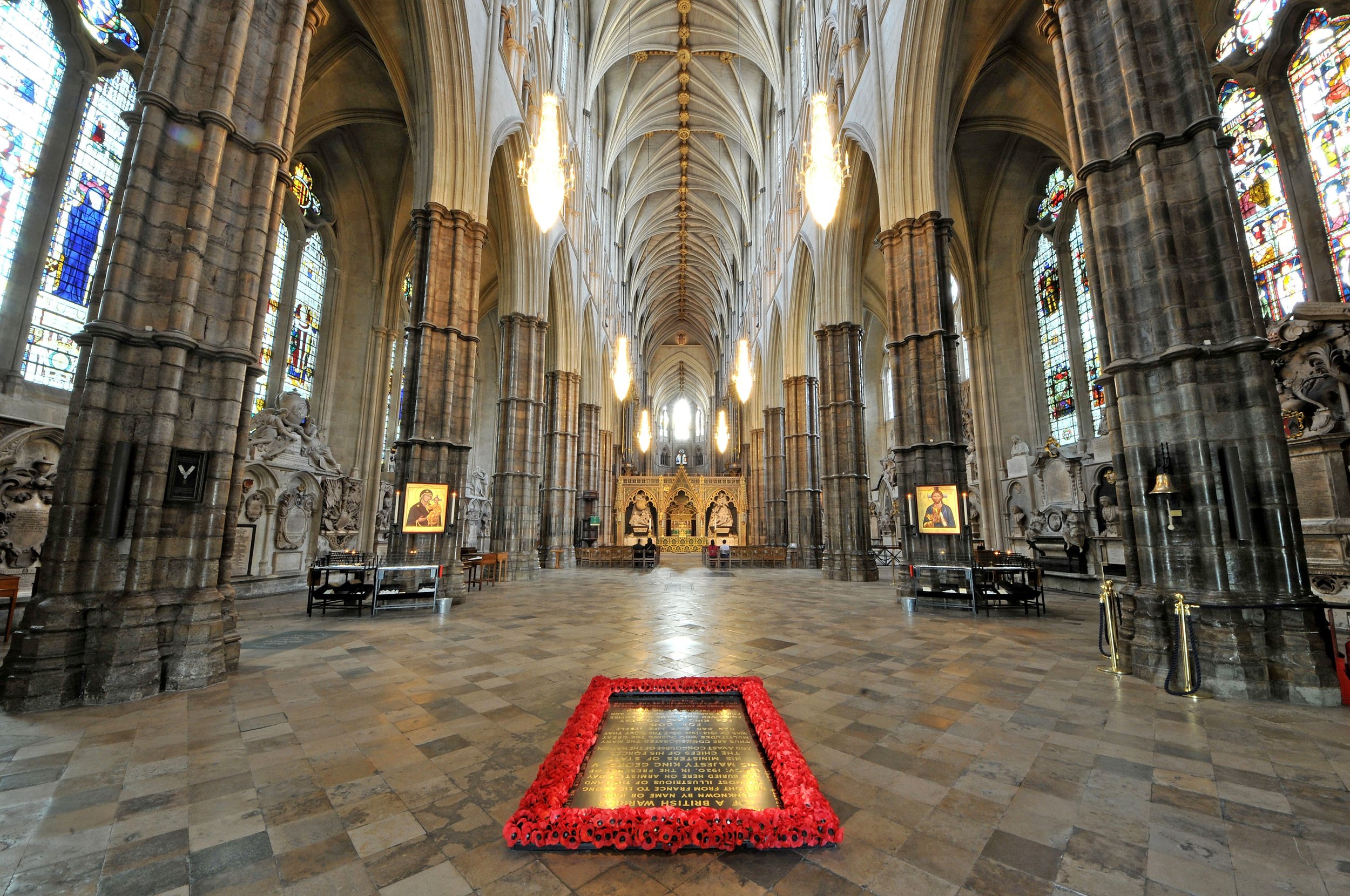


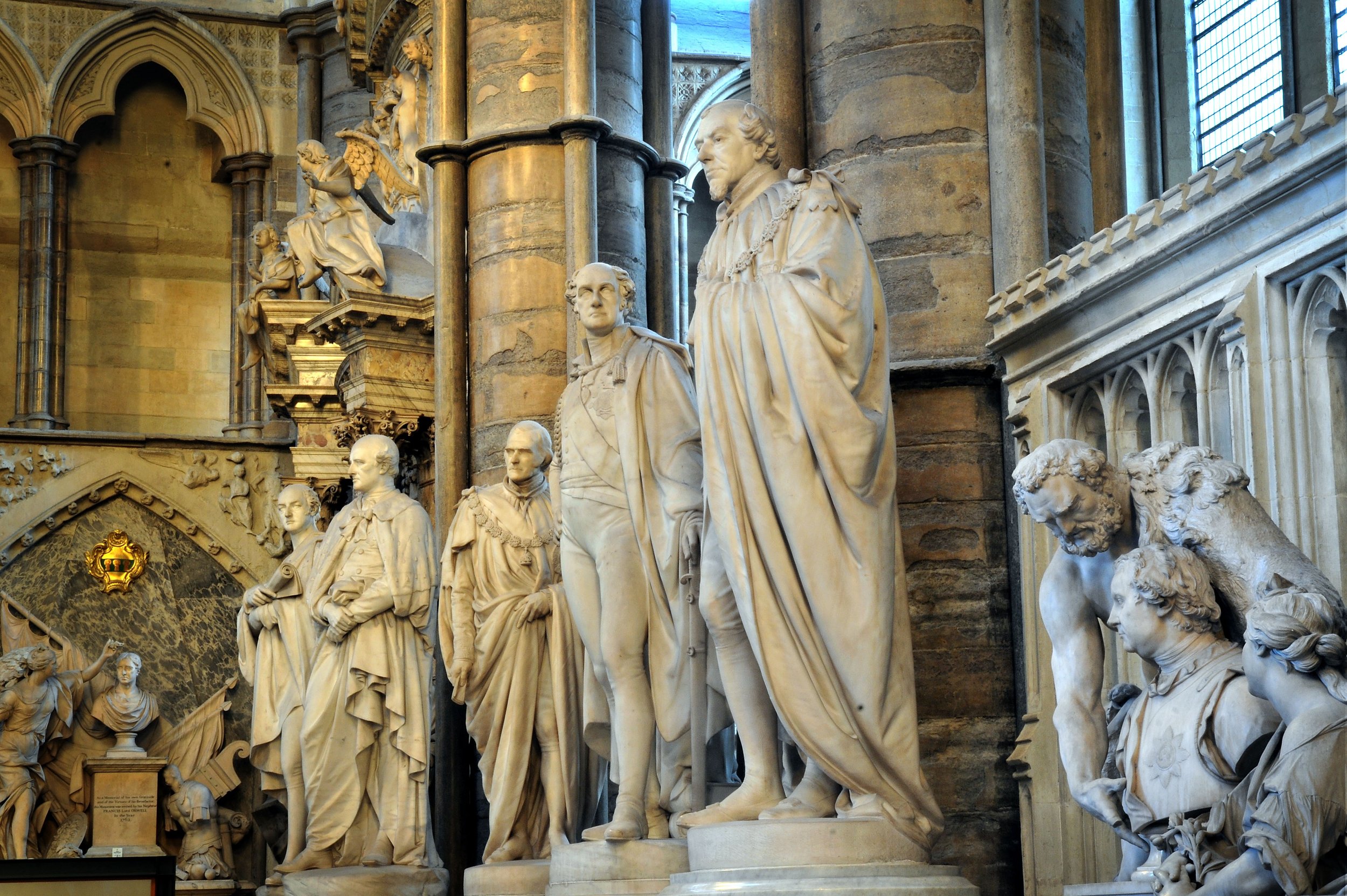
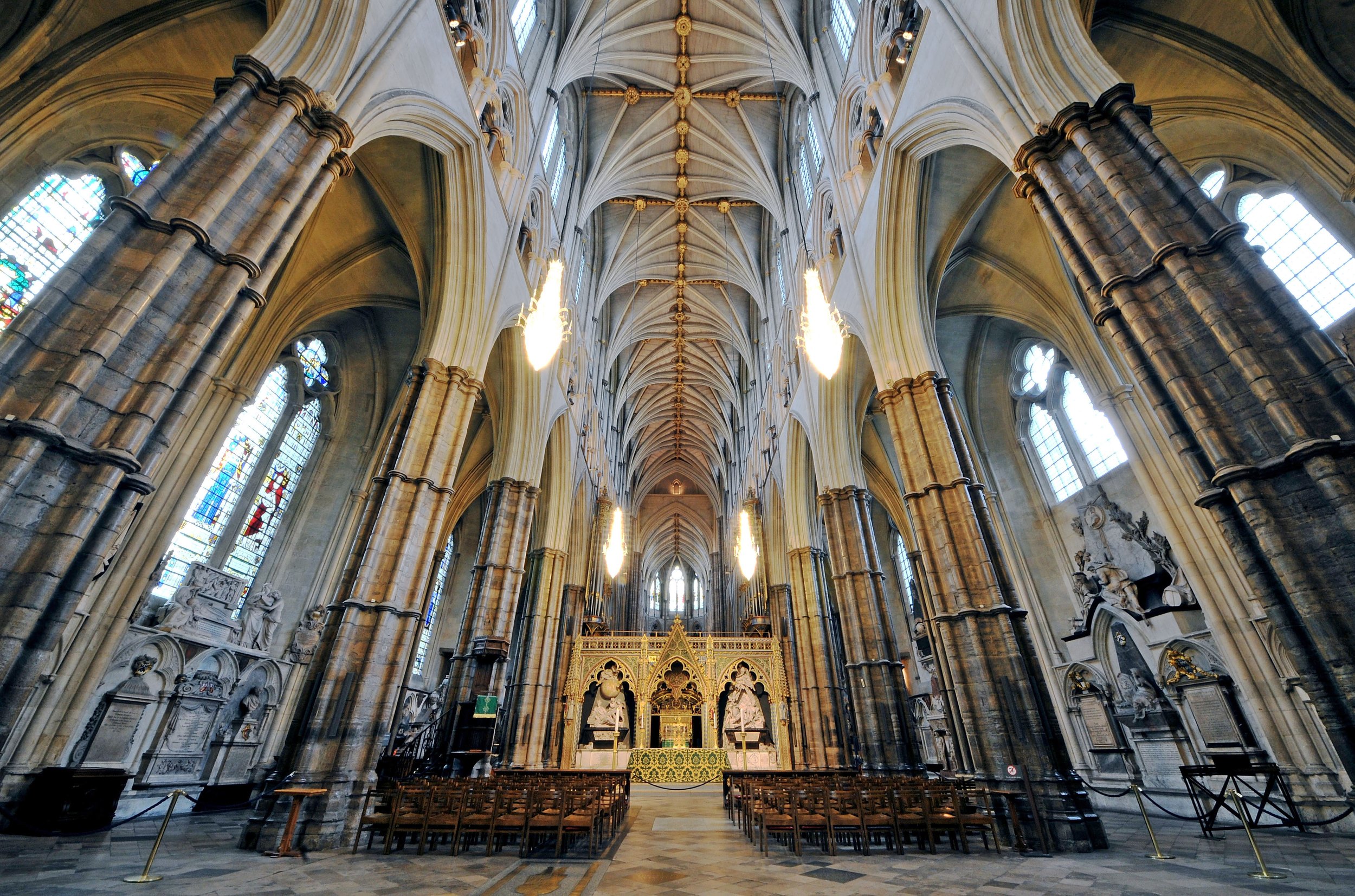
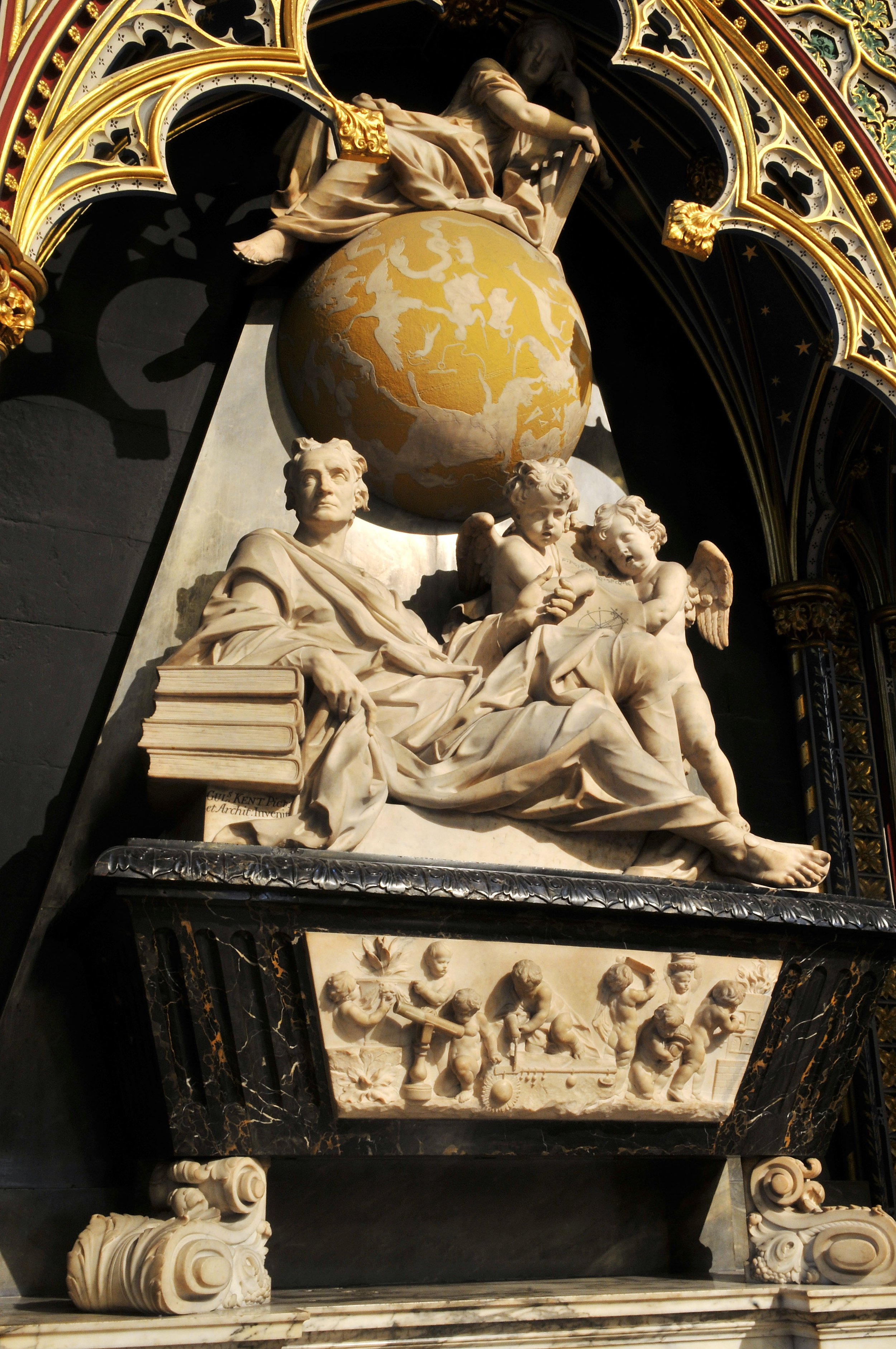



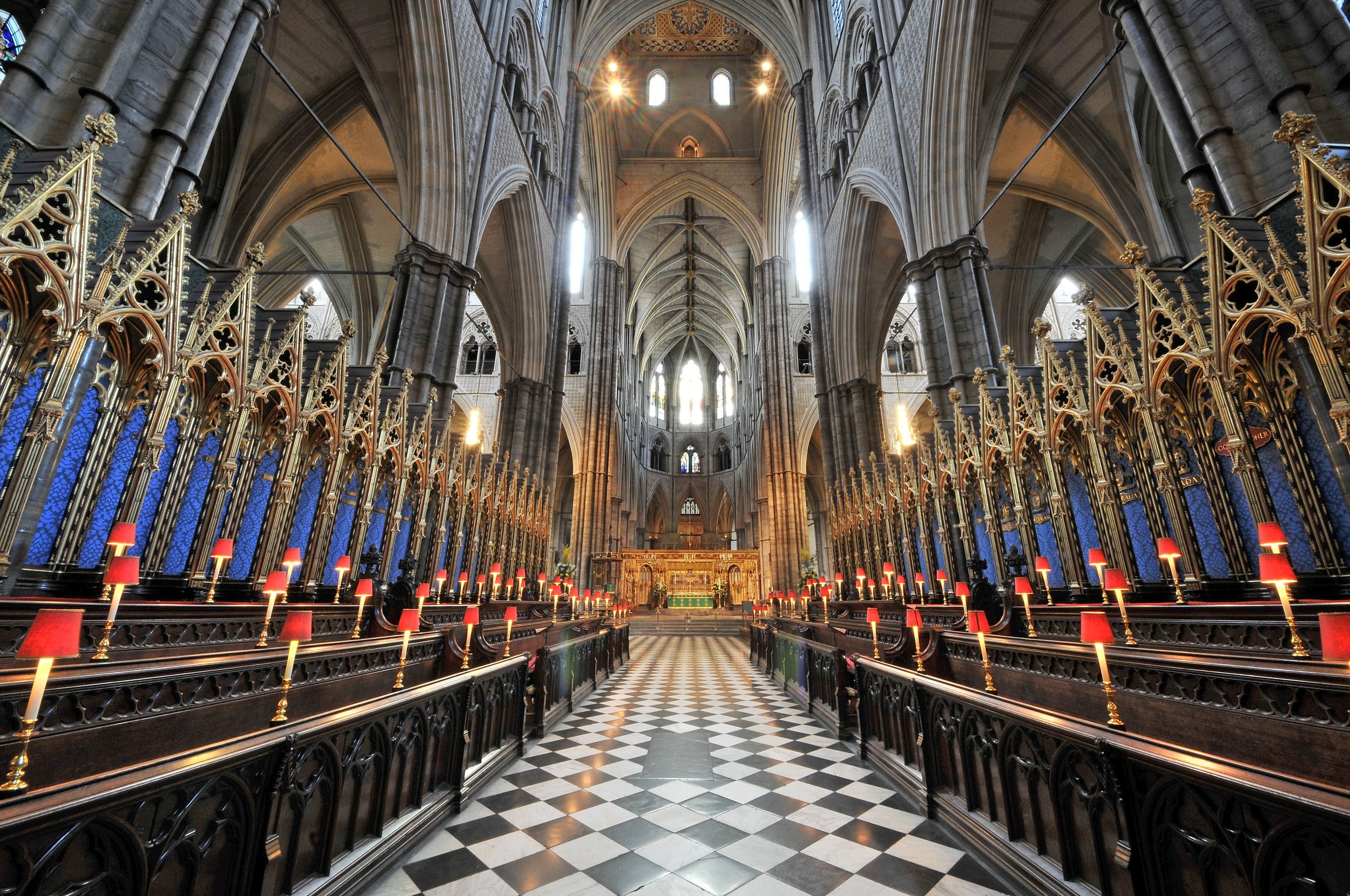

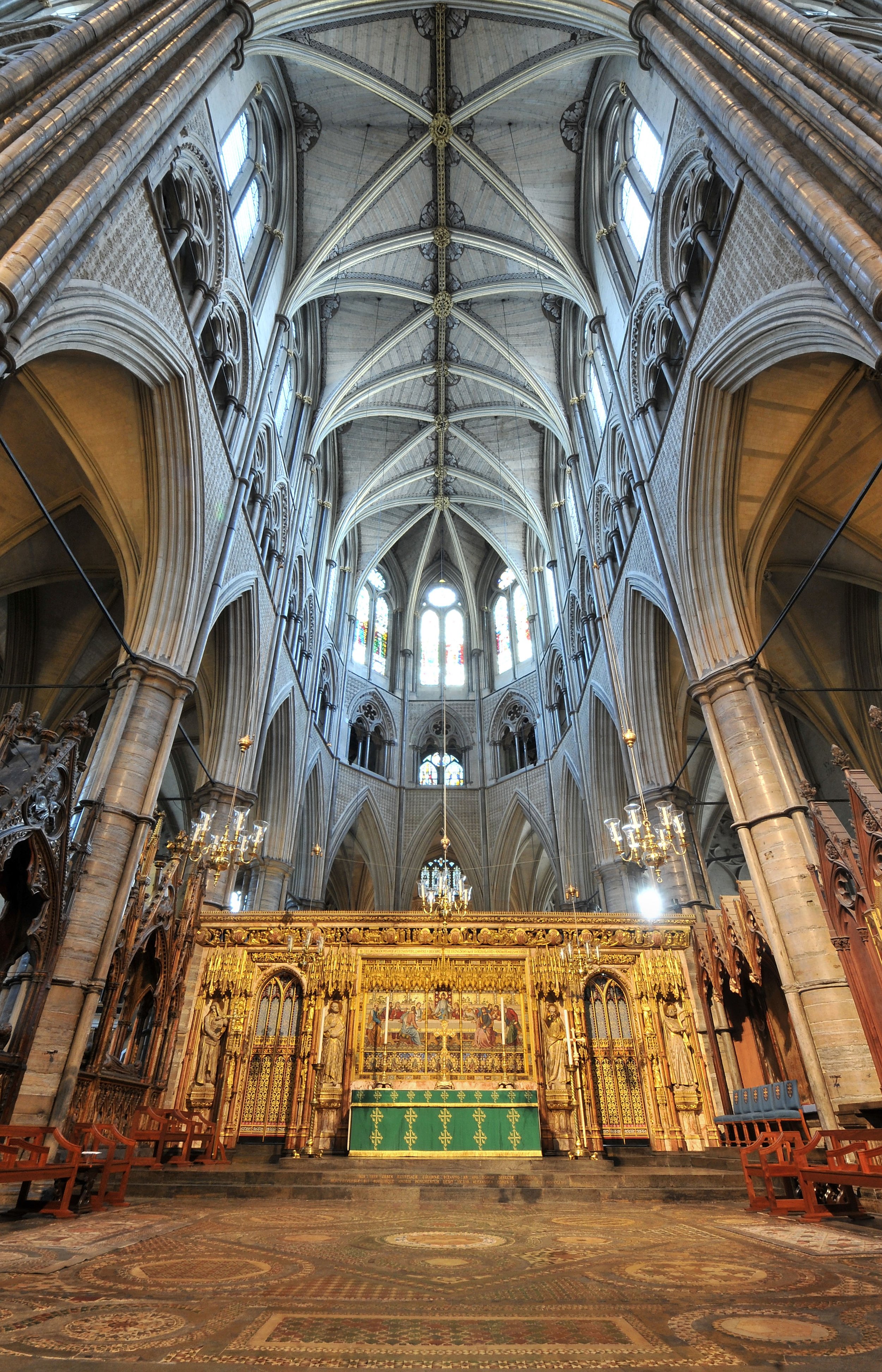
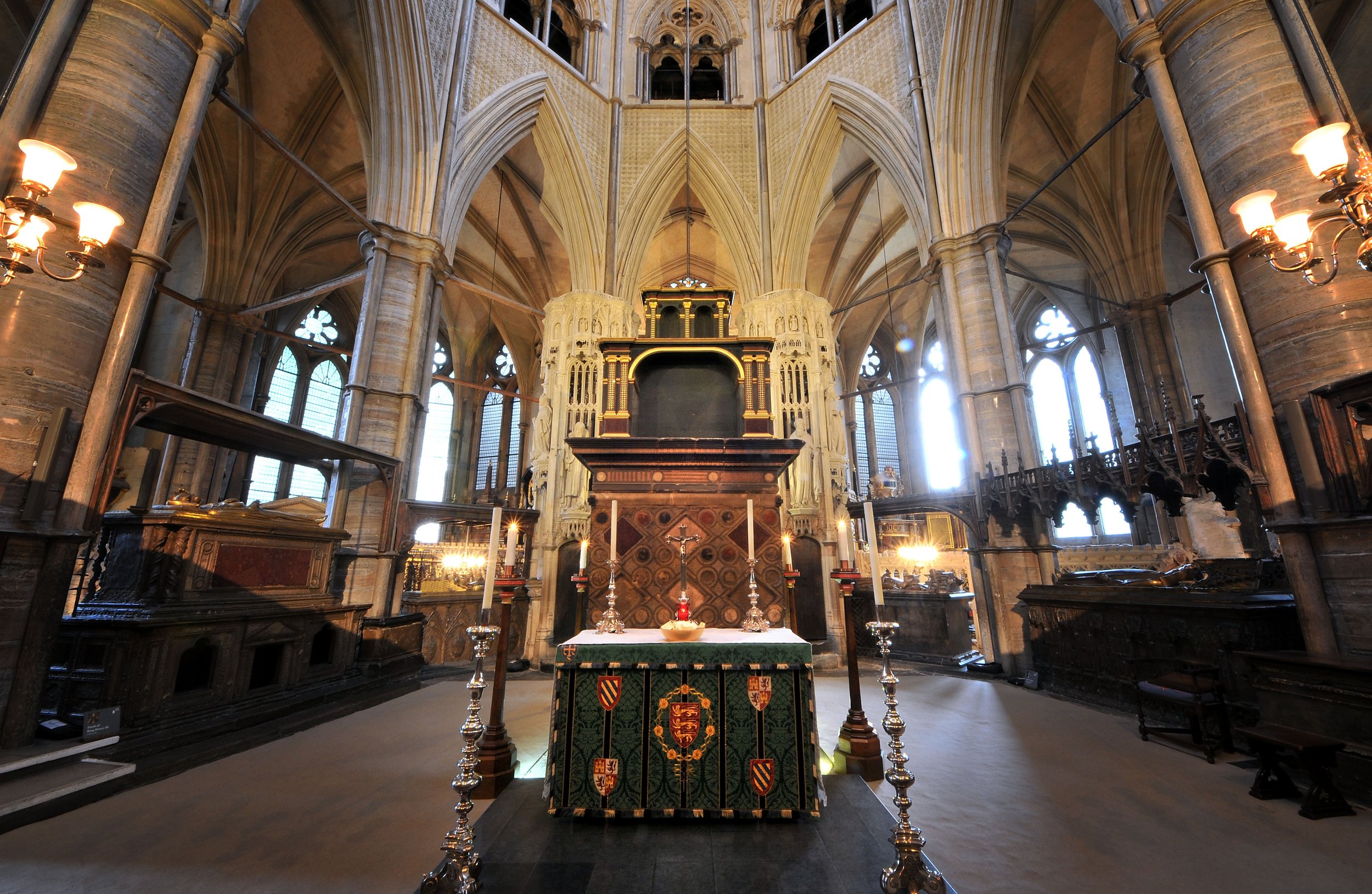




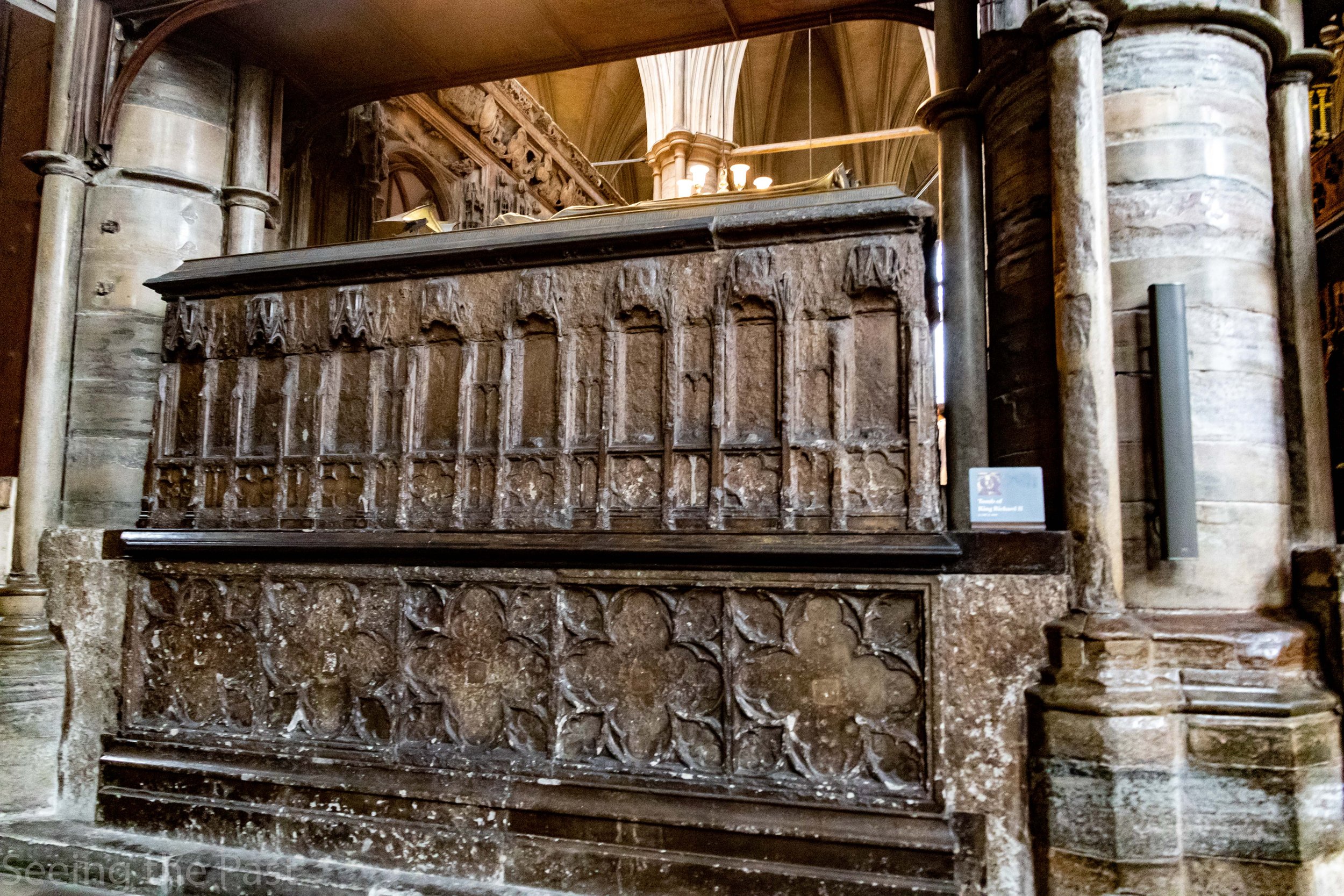


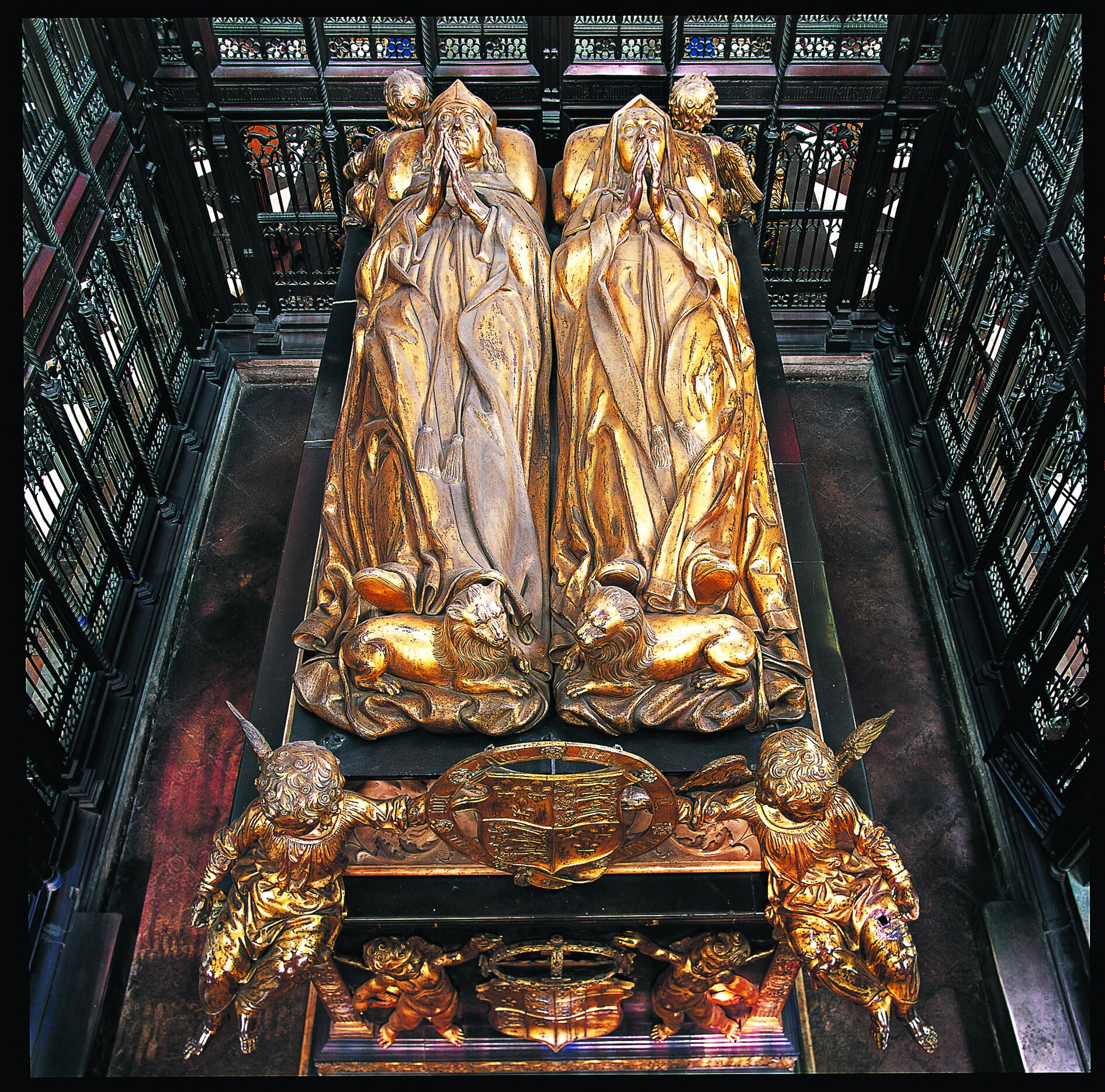



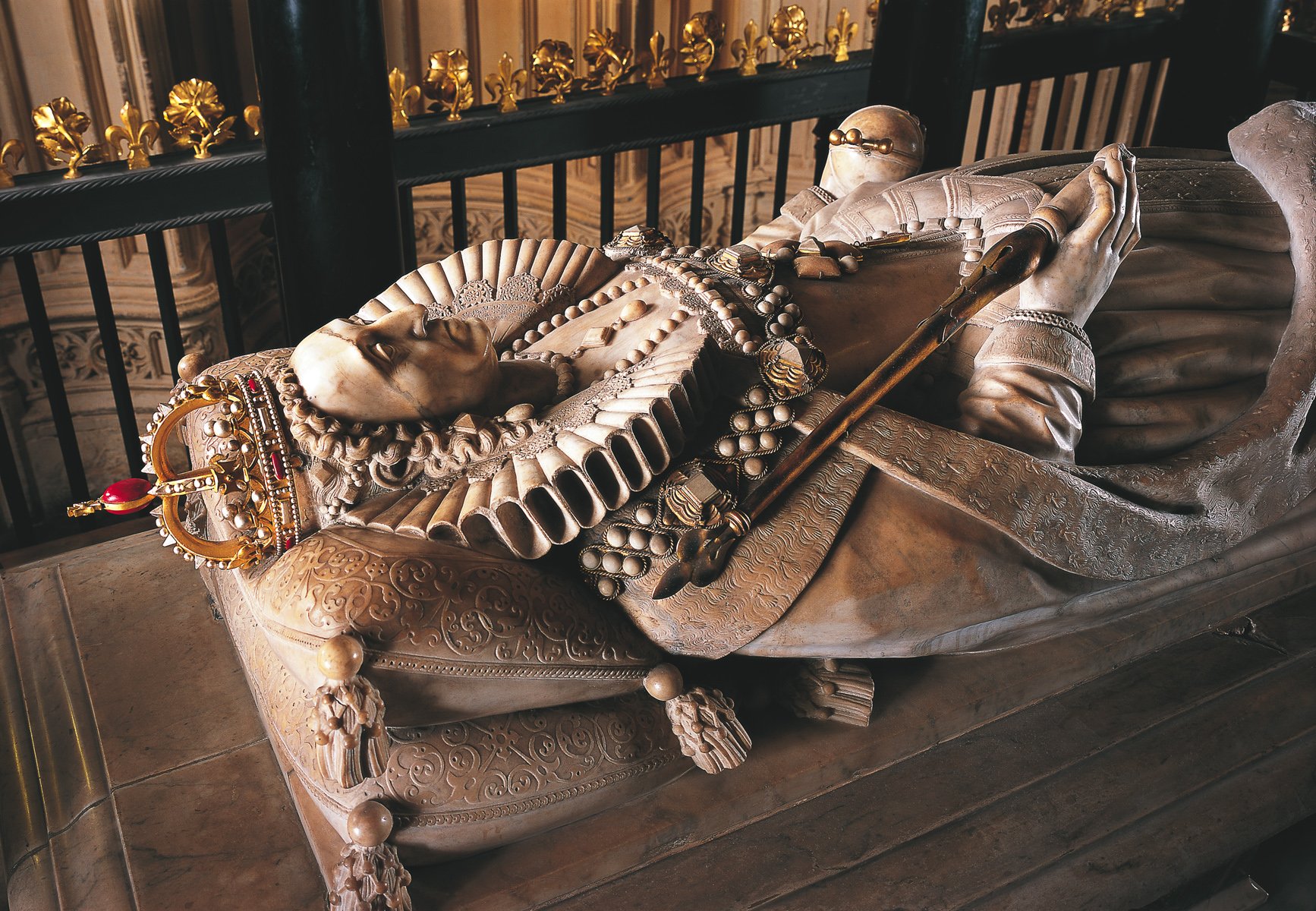
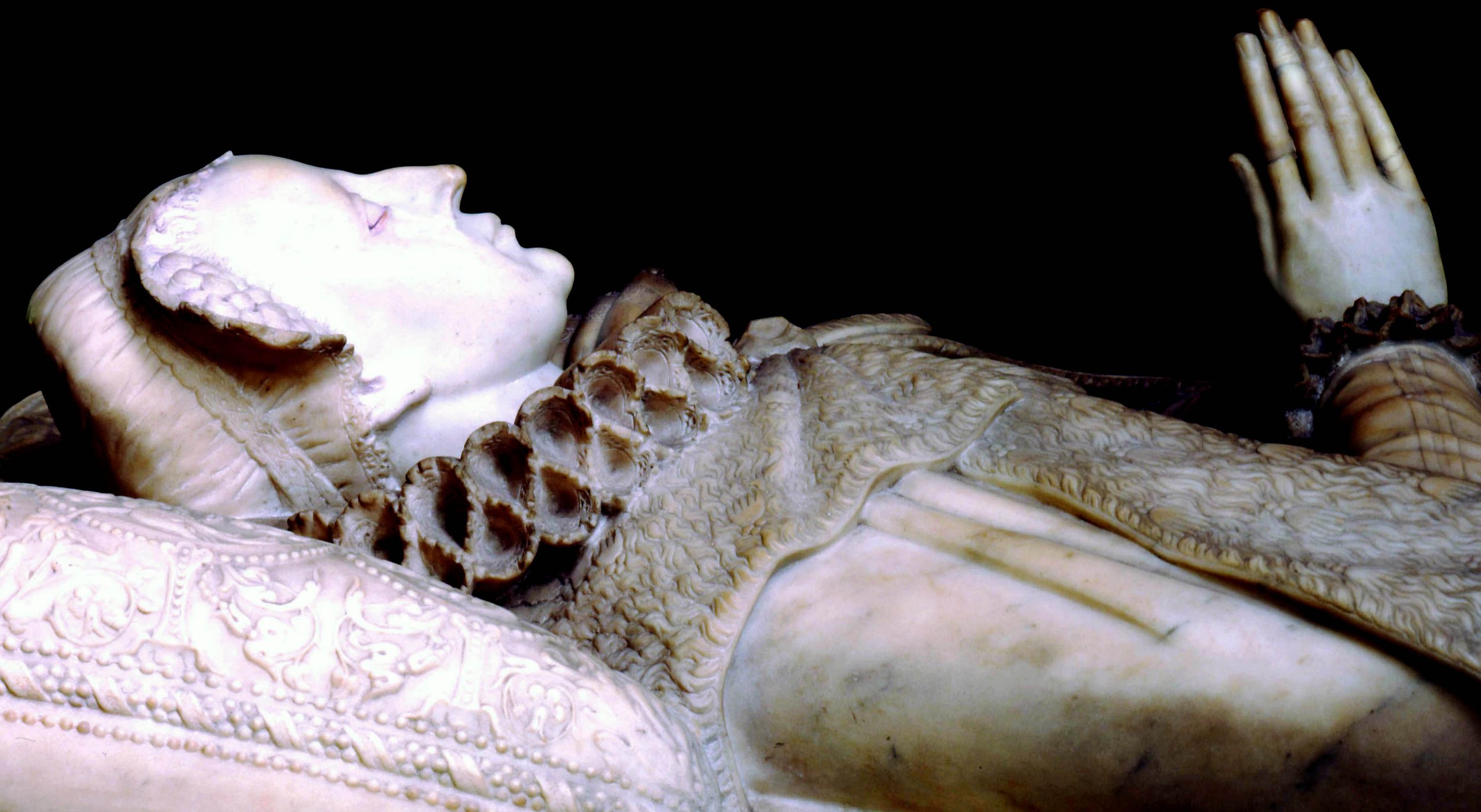
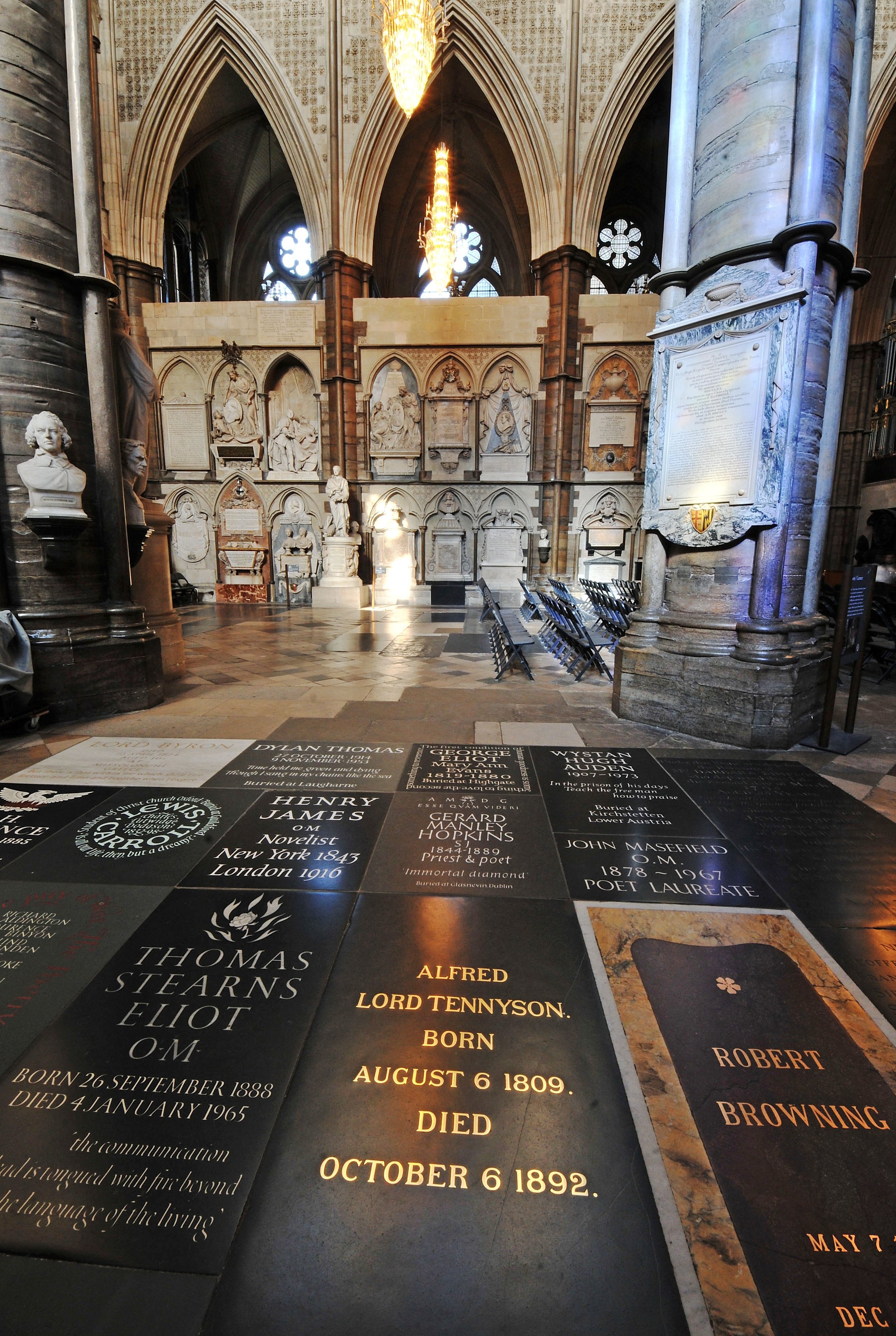




































A day’s wandering around this area of Coventry will present you with hundreds of years of history to discover. You will be able to visit the ruins of the 14th and 15th century church of St Michael that became a cathedral in 1918 as well as the new one next door.. About 160 metres away or a two minute walk, is Holy Trinity church with its amazing Medieval “Doom Painting” which some people believe is the best one in Britain. One minute away, is the wonderful and free Herbert Art Gallery and Museum.